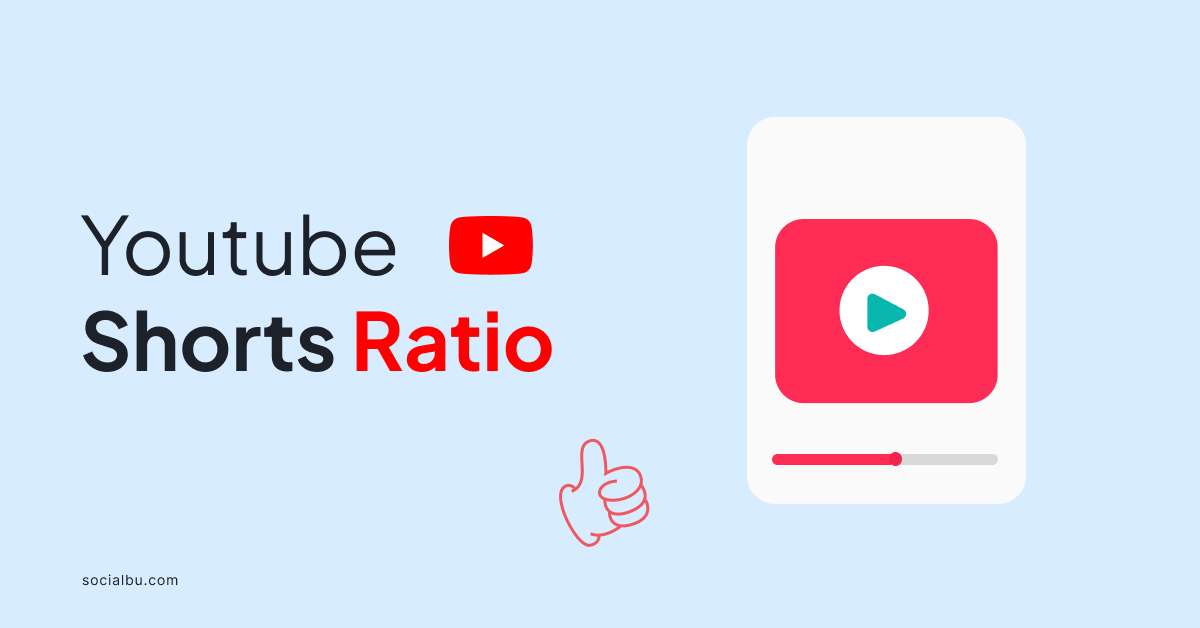The Perfect YouTube Video Dimensions: A Guide

YouTube has become an incredibly popular platform for content creators and video enthusiasts alike. With a vast array of videos uploaded daily, understanding the ideal dimensions for YouTube videos is crucial to ensure your content stands out and reaches its intended audience. In this comprehensive guide, we will delve into the world of YouTube video dimensions, exploring the optimal sizes, aspect ratios, and best practices to create visually appealing and engaging videos.
Understanding YouTube Video Dimensions

YouTube supports a wide range of video dimensions, offering flexibility for content creators. However, selecting the right dimensions is essential to maintain video quality and ensure optimal viewing experiences across various devices and screens. The dimensions refer to the width and height of the video frame, which directly impact the aspect ratio and overall visual presentation.
Standard YouTube Video Dimensions
The standard YouTube video dimensions are 1920 pixels wide by 1080 pixels tall, also known as the 16:9 aspect ratio. This aspect ratio has become the industry standard for high-definition (HD) video content and is widely supported across various devices and platforms. The 16:9 aspect ratio provides a balanced and immersive viewing experience, making it the go-to choice for most YouTube creators.
While the 16:9 aspect ratio is the most common, YouTube also supports other aspect ratios, including 4:3 and 1:1. The 4:3 aspect ratio, often referred to as "standard definition" (SD), was prevalent in the early days of television and is still used for certain types of content, such as educational videos or vintage-style content. The 1:1 aspect ratio, on the other hand, is ideal for square-shaped videos, often used for product demonstrations, tutorials, or social media content that needs to adapt to various feed layouts.
| Aspect Ratio | Width (px) | Height (px) |
|---|---|---|
| 16:9 | 1920 | 1080 |
| 4:3 | 1280 | 960 |
| 1:1 | 1080 | 1080 |

Why Aspect Ratio Matters
Aspect ratio plays a vital role in the overall visual aesthetics of your YouTube video. Different aspect ratios offer distinct viewing experiences and are suited to various content types. For instance, the 16:9 aspect ratio provides a cinematic feel, ideal for storytelling, vlogs, and movies. The 4:3 aspect ratio, with its more traditional TV-like appearance, is perfect for educational content or retro-themed videos. Meanwhile, the 1:1 aspect ratio is versatile, making it a popular choice for social media content that needs to adapt to various platforms and feed layouts.
Best Practices for YouTube Video Dimensions

When creating YouTube videos, it is essential to consider not only the dimensions but also several best practices to ensure your content shines. Here are some key considerations to keep in mind:
Resolution and Quality
YouTube supports various video resolutions, ranging from 360p to 4K and even 8K for the most advanced setups. While the ideal resolution depends on your content and audience, aiming for at least 1080p (Full HD) is recommended to provide a high-quality viewing experience. However, it is crucial to consider your audience’s internet connectivity and device capabilities. While 4K and 8K videos offer exceptional detail, they may not be accessible to all viewers, especially those with slower internet speeds or older devices.
File Formats and Codecs
YouTube supports a wide range of video file formats, including MP4, MOV, and WebM. However, the platform recommends using the MP4 format with the H.264 video codec and the AAC audio codec for optimal compatibility and playback across different devices. These codecs provide efficient compression, ensuring high-quality video and audio while keeping file sizes manageable.
Frame Rate and Duration
The frame rate refers to the number of individual frames displayed per second in your video. The standard frame rate for YouTube videos is 30 frames per second (fps), which is suitable for most content types. However, if you’re creating slow-motion videos or capturing fast-paced action, you may opt for higher frame rates, such as 60 fps or even 120 fps, to capture smoother motion.
As for video duration, there is no hard-and-fast rule. YouTube allows videos of varying lengths, from short clips to feature-length films. However, it is essential to consider your audience's attention span and the nature of your content. Shorter videos, typically under 10 minutes, tend to perform better on YouTube, as they are more engaging and easily digestible for viewers.
Optimizing for Different Devices
YouTube videos are accessed and viewed on a wide range of devices, including computers, smartphones, tablets, and smart TVs. To ensure your video looks its best across all platforms, consider the following tips:
- Responsive Design: Create videos with a flexible layout that can adapt to different screen sizes and aspect ratios. This ensures your content remains visually appealing and easy to view on any device.
- Avoid Tiny Text: Ensure any text or captions within your video are large enough to be readable on smaller screens, such as smartphones. Tiny text can be difficult to read and may detract from the viewing experience.
- Consider Vertical Videos: While YouTube primarily caters to horizontal videos, vertical videos can be effective for certain content, such as mobile-friendly tutorials or vertical product demonstrations. However, keep in mind that vertical videos may be cropped when viewed on certain devices.
Advanced Techniques for YouTube Video Dimensions
For content creators looking to take their YouTube videos to the next level, there are several advanced techniques and considerations to explore:
Ultra-Wide Aspect Ratios
Some content creators opt for ultra-wide aspect ratios, such as 21:9 or 32:9, to create an immersive and cinematic experience. These aspect ratios are often used for gaming content, sports events, or films, providing a wider field of view and a more engaging visual experience. However, it is essential to consider that ultra-wide aspect ratios may not be supported on all devices or platforms, potentially limiting your audience’s viewing options.
Letterboxing and Pillarboxing
Letterboxing and pillarboxing are techniques used to maintain the original aspect ratio of a video when it is displayed on a screen with a different aspect ratio. Letterboxing involves adding black bars at the top and bottom of the video to maintain the original aspect ratio, while pillarboxing adds black bars on the sides. These techniques ensure the video’s integrity and avoid distortion or cropping.
Video Cropping and Scaling
Video cropping and scaling are powerful tools to refine your video’s composition and visual impact. Cropping allows you to remove unnecessary portions of the video frame, focusing the viewer’s attention on specific elements. Scaling, on the other hand, involves resizing the video to fit different aspect ratios or screen sizes. However, it is crucial to avoid excessive scaling, as it can lead to pixelation or loss of visual quality.
Advanced Editing Techniques
Advanced editing software offers a plethora of tools to enhance your YouTube videos. These include color grading, visual effects, and motion graphics. By leveraging these techniques, you can create visually stunning and engaging content that captures your audience’s attention and keeps them coming back for more.
Conclusion
Understanding YouTube video dimensions and aspect ratios is essential for any content creator aiming to make an impact on the platform. By selecting the right dimensions, maintaining optimal aspect ratios, and following best practices, you can create visually appealing and engaging videos that resonate with your audience. Whether you’re a seasoned YouTuber or just starting, paying attention to video dimensions and employing advanced techniques can elevate your content and help you stand out in the crowded YouTube landscape.
What is the ideal YouTube video resolution for most viewers?
+While YouTube supports various resolutions, aiming for at least 1080p (Full HD) is recommended to provide a high-quality viewing experience for most viewers. However, it’s important to consider your audience’s internet connectivity and device capabilities, as higher resolutions may not be accessible to all.
Can I use different aspect ratios on YouTube?
+Absolutely! YouTube supports various aspect ratios, including 16:9, 4:3, and 1:1. Each aspect ratio offers a distinct viewing experience and is suited to different content types. Choose the aspect ratio that best aligns with your content and intended audience.
What is the recommended file format for YouTube videos?
+YouTube recommends using the MP4 format with the H.264 video codec and the AAC audio codec for optimal compatibility and playback across different devices. These codecs provide efficient compression, ensuring high-quality video and audio while keeping file sizes manageable.



